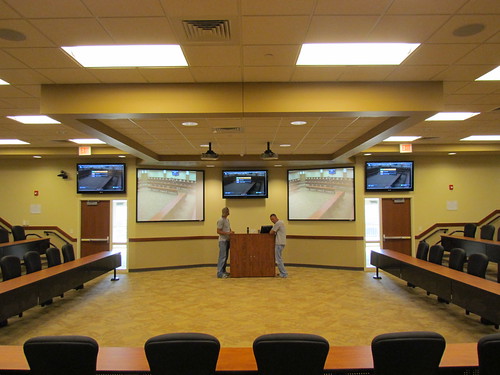Improving Accessibility for People with Learning Disabilities
Wednesday, July 25, 2012
A recent study has highlighted the difficulties apprentices with learning disabilities encounter when trying to complete their trades certification. In the study, Ruth McGillivray discovered how stigma attached to learning disabilities often led to students refusing to disclose their condition and thus struggling in the classroom as they don't ask for help. She equates this with a person refusing to wear their glasses and expecting to succeed in the classroom - it wouldn't work.
A learning disability doesn't make a person less smart, they may just need different teaching methods and other accommodations which tap into their learning style. Often times these accommodations are subtle and require no cost. Moreover, they often improve the learning abilities of people who don't have a disability but benefit from a different approach to teaching. With that said, we give you four tips for accommodating and improving accessibility for people with learning difficulties in the classroom:
1. Assume people with learning disabilities are present.
According to the Learning Disabilities Association of Canada, 1 in 10 people in Canada have a learning disability. In any classroom, there is a good chance of having not just one, but multiple students with a learning disability. Learning disabilities are invisible and may not be readily apparent to a teacher, students may not want to disclose their condition as they are fearful of stigma or may not be aware they have a learning disability. Assuming people with learning disabilities are present ensures the classroom is inclusive and may even help students succeed who weren't aware they had a disability.
2. Utilize Universal Design in learning materials.
Universal Design for Learning is a framework that enables all learners to gain knowledge, skills, and enthusiasm for learning. Using learning materials which respect the diversity of a given population and pay attention to details like appropriate use of fonts and visuals will make materials accessible to more students. Additionally, learning materials written in clear and concise language will make the curriculum easier to understand. Finally, educators need to be flexible and open to presenting and engaging the students in a variety of manners. The National Center for Learning Disabilities makes note of how by incorporating a simple support for one group of students, all students benefit:
"For example, captioned video is of great help to Deaf students, but is also beneficial to students who are learning English, students who are struggling readers, students with attention deficits, and even students working in a noisy classroom."
3. Provide access to key accommodations.
Accommodations for a person with a learning disability allow that person to show what they know without being impeded by their disability. There are a host of strategies, activities and technology which can be utilized by educators to remove impediments to learning. These include: Providing presentations or instructions orally, providing large print materials, allowing for verbal responses, allowing for responses via computer, allowing breaks, administering tests in space with minimal distractions or in private rooms. These basic accommodations don't give an undue advantage and help facilitate a student's ability to demonstrate their skills and knowledge.
4. Provide options and resources for further help.
Learning disabilities are varied and can leave educators unsure of what to do or where to turn. Fortunately, there are a host of resources and options available to students and teachers. In Canada, we highly recommend giving these provincial/territorial learning disabilities associations a look. In the classroom, teachers can have access to these resources on hand and should keep an eye open for students who may be showing signs of a learning disability. Increasing awareness of disabilities, and providing resources for help, will help decrease stigma related to learning disabilities and help create a learning environment where everyone can succeed.



0 Comments:
Post a Comment
Subscribe to Post Comments [Atom]